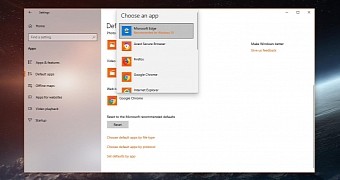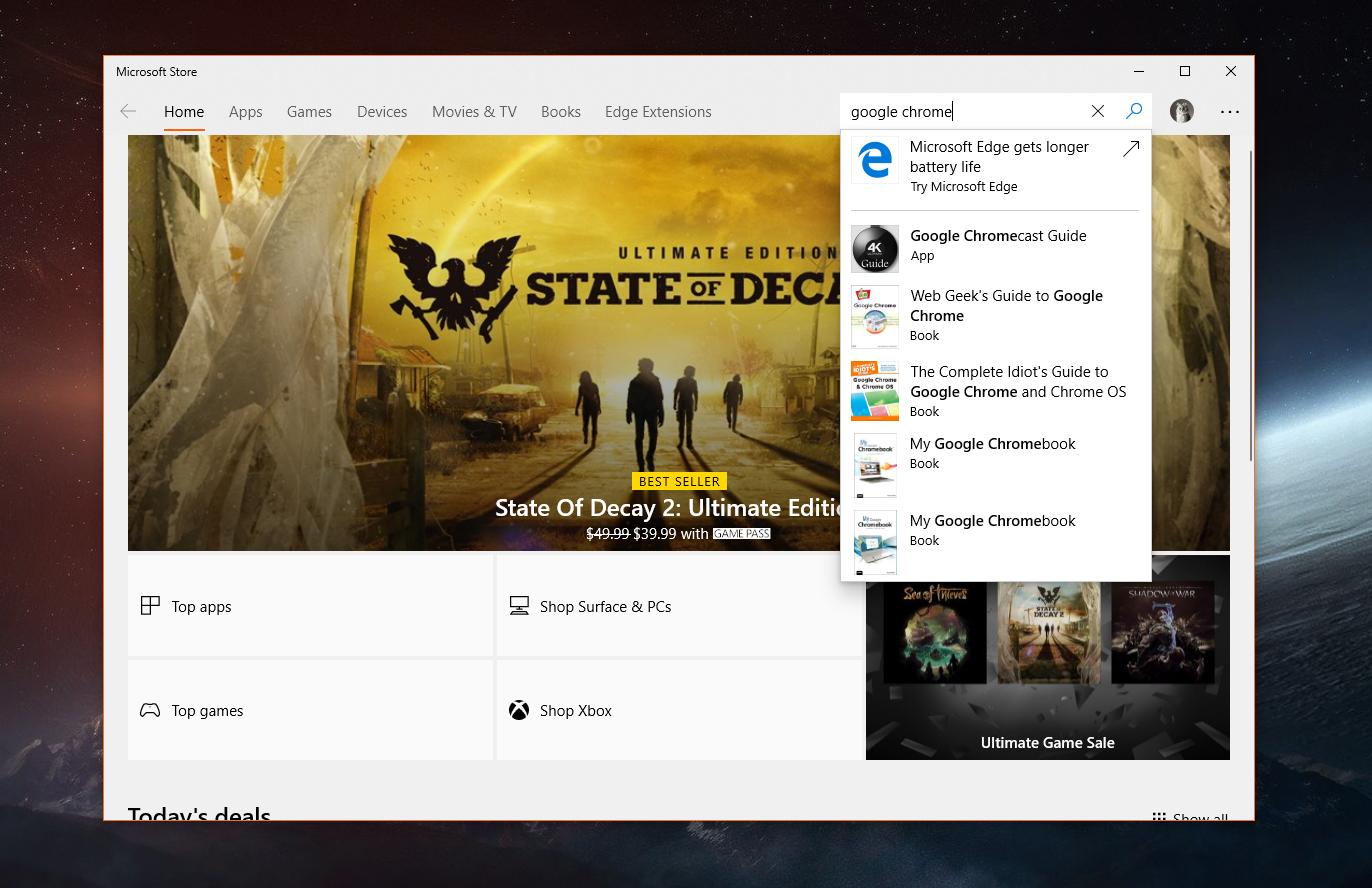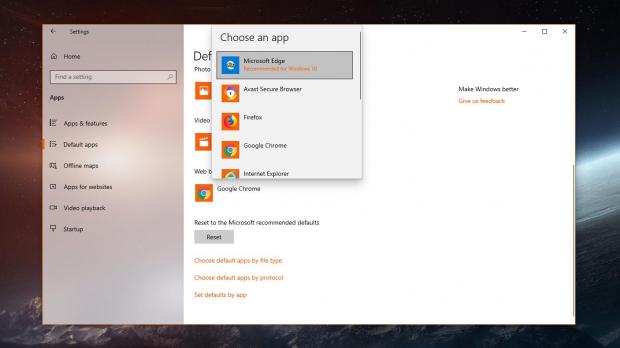One of the most criticized “features” of Windows 10 is what Microsoft calls recommendations, but which are most often described by users as ads.
Technically, with these popups, Microsoft wants to help users make the right choice when it comes to apps they should install, only that in many cases, they become too intrusive and make the whole attempt look desperate.
The best example is without a doubt Microsoft Edge. As the new default browser in Windows 10, Microsoft Edge is the application that Microsoft really wants adopters of its latest operating system to use. This means that in addition to offering it as default, Microsoft also uses these recommendations to convince users to avoid switching.
As the world’s top desktop browser, Google Chrome is the one that’s most often targeted by these recommendations/ads.
For example, when trying to change the default browser on Windows 10, Microsoft Edge is displayed in the drop-down menu with a small flag informing it’s “recommended for Windows 10.” No other browser comes with this label, despite all of them obviously fully compatibily with and supported by Windows 10.
In the past, toast notifications or tooltips also showed up on the desktop to promote Edge features, and more recently, Microsoft has also made such a change in the Microsoft Store. When searching for Google Chrome on the Microsoft Store, the first result is actually a small suggestion linking to Microsoft Edge and reading “Microsoft Edge gets longer battery life. Try Microsoft Edge.”
The recommendation does not show up for other browsers like Mozilla Firefox or Opera, and it’s pretty clear that Google Chrome is specifically targeted by this behavior.
Unfortunately for Microsoft, this rather aggressive push not only that hasn’t worked, but it’ll never do. In fact, what it does is create more frustration among Windows 10 users and make the whole attempt look desperate, eventually hurting the company’s image.
This doesn’t necessarily mean that it’s unfair practice. Windows 10 is Microsoft’s operating system, so the company has the right to promote its browser on its own platform, though some people may think otherwise given the recent antitrust disputes.
But what’s more important is that this tactic fails to produce any major difference in Microsoft Edge adoption. Right now, Google Chrome is the leading browser on the desktop with more than 60 percent share, while Edge is very far behind with just 4 percent. This means there’s no way Edge would ever manage to overtake Chrome, and the huge difference between the two shows just how ineffective this recommendation/ad strategy really is in Windows 10.
What Microsoft can do to boost adoption of its browser is to actually improve it up to the point where it becomes a compelling alternative to Google Chrome. Instead of targeting Chrome with ads all over Windows 10, Microsoft should focus more on improving its own browser, thus trying to win users the more honest way.
For the time being, however, Microsoft Edge does evolve, but everything happens at a painfully slow pace. Updates are delivered as part of new OS feature updates, and given that such releases take place twice each year, it’s easy to see why users don’t expect the new Windows 10 browser to improve substantially in the coming future.
Microsoft Edge is the successor to Internet Explorer not only because it replaces it in Windows 10, but also because it has to deal with the same amount of criticism as the original Microsoft browser. What’s worse is that people still think Microsoft Edge is the best browser to download Google Chrome, and unless Microsoft proves them otherwise with a less aggressive approach and frequent updates, this is unlikely to change.

 14 DAY TRIAL //
14 DAY TRIAL // 

